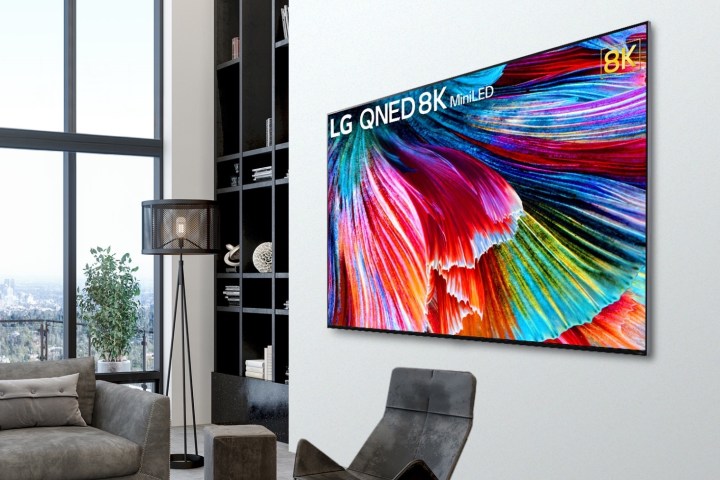At CES 2021, we learned that LG planned to upgrade its LCD TV lineup with mini-LED backlight technology under the label “QNED TV,” but now we finally have more details, including pricing and availability. LG’s first QNED TVs will hit retail outlets in July, with an entry price of $2,000 for a 4K 65-inch model. There will also be 8K models available.
LG has always touted the picture quality benefits of its OLED TVs, and for good reason. On an OLED TV, each pixel generates its own brightness, resulting in the best black levels and contrast you can get in a TV. But with the advent of mini-LED backlighting, it’s possible for LED and QLED TVs to get much closer to OLED’s advantages in this area because they allow for much finer-grained control over brightness than regular LED backlights.
2021 LG QNED Mini-LED TVs

Mini-LEDs are so small, manufacturers can fit thousands of them into a space that once held hundreds of LEDs or even fewer. LG’s 86-inch 8K QNED99, for instance, has about 30,000 mini-LEDs, which are then divided into 2,500 local dimming zones. LG says this lets the QNED99 deliver a 10x better contrast ratio than the company’s non-QNED models.
In addition to using thousands of mini-LEDs for better brightness and contrast, LG’s QNED TVs also use the company’s quantum dot nanocell technology. These tiny particles help to improve the TV’s color accuracy without diminishing overall brightness. LG claims that its QNED TVs achieve 100% of the Digital Cinema Initiatives’ P3 color space (DCI-P3) — an important capability if you want to see movies in their full glory.
Beyond the new picture performance enabled by mini-LED backlights, these QNED models boast most of the features we’ve come to expect from LG’s OLED TVs, like
They also sport excellent support for HDMI 2.1 features, like HDMI eARC, variable refresh rate (VRR), auto low-latency mode (ALLM), and 4K resolution at 120Hz — all of which will make gamers very happy indeed.
Here’s the full 2021 QNED TV lineup:
8K QNED99 Series
- 86QNED99UPA
86-inch, $6,500: Available May 2021 - 75QNED99UPA
75-inch, $4,800: Available July 2021 - 65QNED99UPA
65-inch, $3,500: Available July 2021
4K QNED90 Series

- 86QNED90UPA
86-inch, $4,000: Available July 2021 - 75QNED90UPA
75-inch, $3,000: Available July 2021 - 65QNED90UPA
65-inch class $2,000: Available July 2021
Editors' Recommendations
- TCL prices its insanely bright, 115-inch QM89 4K TV at $27,000
- Sony debuts the Bravia 9, its brightest 4K TV ever, alongside new 2024 models
- Samsung’s 2024 Neo QLED TVs are here, and you can preorder them now from $1,200
- LG’s 2024 OLED evo TVs available for preorder and start at $1,500
- TCL’s giant 115-inch QM89 is the world’s largest 4K mini-LED TV



